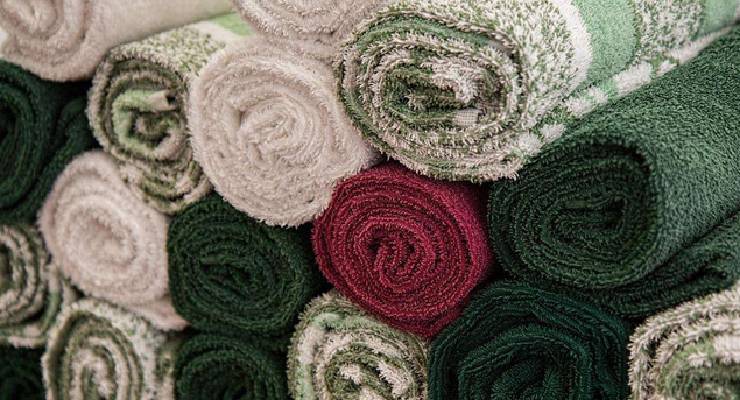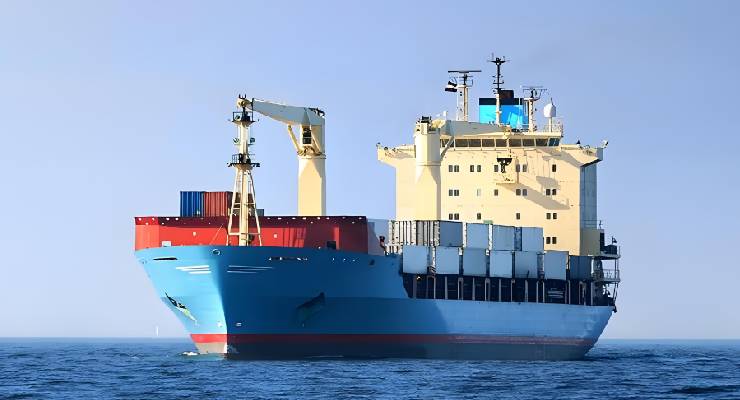
Transporting textiles may seem simple, but as anyone who has embarked on the journey knows, it requires a delicate balance between expertise, preparation and attention to detail. These exquisite works have aesthetic and cultural value and often have significant monetary value. Whether you're a seller looking to ship these treasures to customers around the world, or an individual moving with precious floor coverings, understanding the intricacies of textile shipping is crucial to ensuring their safe passage.
Experience the convenience of modern transportation with your trusted digital freight forwarder, Winsail. Our advanced online platform and user-friendly mobile app make the transportation of textiles a breeze. With our expertise in handling fragile items, we ensure that your valuables are properly protected throughout transportation. Get competitive quotes, track your shipments in real time, and enjoy the convenience of managing your shipments from anywhere. Trust Winsail to deliver your textiles safely and efficiently.
Prepare textile for transport
Before you start shipping, properly preparing your textile is essential to ensure its safety during transportation. Taking the time to clean, roll or fold and properly secure items can greatly reduce the risk of damage. Here are the basic steps to prepare textiles and rugs for shipping:
1. Clean before packing: Clean the textile thoroughly before packing. Dust, dirt, and debris can get stuck in the fibers, potentially causing damage during transportation. Depending on the material and weave, use appropriate cleaning methods such as vacuuming, dry cleaning or gentle washing. Allow items to dry completely to prevent mold growth.
2. Roll or fold: The choice to roll or fold the textile depends on the size of the textile, the material and the shipping container. Smaller rugs or textiles made of delicate materials may be better suited to rolling up to prevent creases or wrinkles. Larger rugs (such as oversized rugs) need to be folded carefully. When folding, however, avoid sharp creases that can cause permanent damage.
3. Fixed edges: textile edges are particularly vulnerable to damage. Carefully tie or tape the edges to prevent tangling or unraveling. For edges, use padding or protective materials to prevent them from being squeezed or bent during transportation.
4. Apply a protective layer: To protect your textiles from potential moisture, dust, and external forces, consider wrapping them in a protective layer. Use acid-free tissue paper or clean sheets to form a barrier between the textile and the packaging material.
5. Record the situation: Before packaging, record the condition of the textile with photos. This can be used as a reference in case of any dispute over damage during transport. Label with basic information such as the item's name, size and instructions. To protect textiles from potential moisture, dust, and external forces, consider wrapping them in a protective layer. Use acid-free tissue paper or clean sheets to form a barrier between the textile and the packaging material.
6. Wrap valuables: If your textile or rug is valuable or fragile, consider investing in custom packaging. textile tubes, crates or boxes specifically designed to accommodate their size and shape can provide additional protection. For rolled textiles, make sure they are adequately padded and secured inside the container.
Adequately preparing textiles and rugs for transport protects them from potential damage and contributes to a smoother shipping experience. Keep in mind that each textile or rug may have unique material, size, and condition requirements.

Packing materials for transporting textiles
Choosing the right packaging material is a key step in ensuring the safe transportation of textiles. Proper packaging prevents damage from external factors and maintains the integrity of these valuable items. Here is a comprehensive overview of packaging materials to consider:
1. Packaging materials:
Plastic sheet: Transparent plastic sheet can prevent moisture and dust. However, make sure that the plastic sheet does not directly touch the surface of the textile, or it may absorb moisture.
Bubble film: The use of bubble film to form a buffer layer to absorb shocks and impacts during transport. This is very useful for delicate or fragile textiles.
Acid-free tissue paper: Acid-free tissue paper is ideal for wrapping textiles before laying other materials. It can prevent ink transfer, and play the role of dust and moisture.
2. Filling material:
Foam or cushioning material: Place foam sheets or cushioning material around the textile to add an extra layer of protection. This helps absorb shock and vibration during transport.
Corner guards: Foam corner guards help protect textile edges from impacts that can cause bending or wrinkling.
3. Cardboard tube for rolled textile:
Consider using a sturdy cardboard tube to wrap the rolled textile to prevent it from being squeezed and deformed during transportation. These cardboard tubes are especially useful for maintaining the shape of rolled textiles.
4. Custom boxes or crates:
If your textile or rug is valuable or delicate, consider purchasing a custom box or crate to fit the specific size of the item. These containers provide optimal protection and prevent displacement during transport.
Keep in mind that the type, size, material and fragility of the textile or textile should guide the choice of packaging materials. Avoid using materials that can damage the item, such as materials with strong adhesives or inks that can be transferred to the surface of the textile. By choosing the right packaging materials and methods, you will take an important step towards ensuring the safe transportation of textiles and rugs.
Textile delivery options
When transporting textiles, choosing the right mode of transport is crucial to ensuring timely delivery and the safety of valuables. The type of shipping service you choose depends on the destination, urgency and fragility of the item. Here is an overview of the different modes of transport to consider:
1. Domestic Transportation:
Domestic transport involves transporting textiles within the same country. There are several options, each with its own advantages and considerations:
Standard Ground transport: Ground transport is the most common and cost-effective option. It is suitable for textiles and rugs that are not time-sensitive and can be delivered in a few days to a week.
Expedited or express shipping: If you need your item delivered quickly, expedited or express shipping services offer faster delivery times, usually within one to three business days. However, this option may require a higher fee.
Freight: Air and sea are suitable options for oversized textiles and rugs. They are designed for heavy and bulky items that often require additional handling and care.
2. International Transport:
Due to customs regulations, long transit times, and potential import and export duties, international textileing requires careful consideration. The following are the main international shipping options:
International Economy Shipping: Similar to standard ground shipping, this option is economical but has a longer delivery time. Suitable for non-emergency transport.
International Express or priority delivery: Express or priority delivery services can speed up international deliveries. These services often offer tracking and faster delivery times, making them ideal for time-starved shipments.
Freight forwarding: Freight forwarding services can save costs when moving large quantities of textile internationally. These services consolidate cargo and offer a variety of shipping options.
3. Select Winsail: your textile shipping digital freight forwarder:
Regarding the transportation of textiles and rugs, Winsail is a reliable partner with its innovative online platform and mobile application. With Winsail, you have access to a user-friendly digital interface that streamlines the entire shipping process, from getting quotes to tracking shipments in real time. Our expertise in handling fragile items such as textiles and rugs ensures that your valuables are safe throughout your journey. Our mobile app is so convenient that you can manage your shipments anywhere, anytime, and easily complete international shipping with just a few taps on your device.
With Winsail's commitment to transparency, competitive pricing and efficient logistics solutions, you can rely on them to make textile and textile shipping a seamless experience.
4. Insurance and Tracking:
Regardless of the mode of transportation you choose, consider purchasing transportation insurance to protect your textile from damage, loss or theft during transportation. Also, make sure that the shipping service provides a tracking function so that you can monitor the progress of your cargo.
When choosing a mode of transport, carefully assess your needs, budget and the fragility of the item, and consider customs regulations at the destination and import taxes on international shipments. Choosing the right mode of transport ensures that your textile arrives safely and on time.

Documentation and labels for transporting textiles
Precise and accurate documentation and labeling are essential for the smooth transportation of textiles. Before sending valuables, make sure you have all the necessary shipping documents ready, including invoices, customs declarations, and any required permits. Proper labeling on the outside of the package, including the recipient's address, contact information and any handling instructions, helps the carrier and handlers to complete the shipping process accurately.
Also, consider attaching a shipping label and maintenance instructions to the package to guide the recipient in proper unpacking and maintenance. Adequate documentation and labels simplify the shipping process and result in a positive shipping experience for both sender and recipient.
Estimation of textile transportation costs
Estimating the transportation cost of textile requires consideration of various factors. Size, weight, destination, mode of transportation, and additional services such as insurance or expedited delivery all affect the final cost. It is vital to get accurate shipping quotes from different carriers or transport companies to compare prices and services.
Keep in mind that international shipping may incur additional costs such as duties and taxes. While cost is an important consideration, choosing a mode of transportation that balances economy with reliability can prioritize the security and timely delivery of valuable items.
Conclusion
In the intricate world of textile shipping, careful preparation, proper packaging and thoughtful shipping options are essential to ensure that these precious items arrive at their destination intact. By following the comprehensive guidelines outlined in this ultimate guide, you can confidently tackle the challenges of textile shipping.
Keep in mind that whether you are a seller shipping pieces to customers or an individual protecting precious heirlooms during a move, the knowledge and insights gained from this guide will enable you to maintain the beauty, value and meaning of your textile throughout the shipping process.
-
 A Comprehensive Guide to Refrigerated ContainersJun 17,2025
A Comprehensive Guide to Refrigerated ContainersJun 17,2025 -
 Guide to 20ft & 40ft Shipping Container Dimensions for Global LogisticsJun 17,2025
Guide to 20ft & 40ft Shipping Container Dimensions for Global LogisticsJun 17,2025 -
 How to track shipments sent from ChinaMay 13,2025
How to track shipments sent from ChinaMay 13,2025 -
 Guide to Importing and Shipping Cars from China to UAEMay 13,2025
Guide to Importing and Shipping Cars from China to UAEMay 13,2025 -
 Guide to Importing and Shipping Camping Gear from ChinaMay 07,2025
Guide to Importing and Shipping Camping Gear from ChinaMay 07,2025 -
 Shipping from China to YemenMay 06,2025
Shipping from China to YemenMay 06,2025

